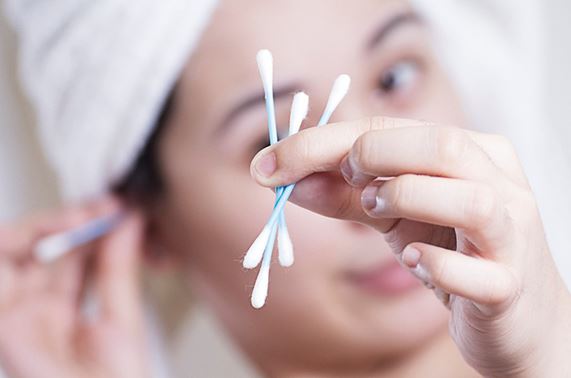Why Using Cotton Swabs to Clean Ears Can Result in Ear Injuries
April 07, 2018

Scrubbing behind the ears is likely part of your child’s bathtime ritual, but cleaning inside the ears should not be.
“For safety reasons, we recommend that neither parents nor children attempt to clean the ears by placing anything inside the ear canal, including cotton swabs, bobby pins, fingers or toothpicks,” says pediatric emergency medical specialist Jerri Rose, MD. “The old saying, ‘Anything smaller than your elbow should not go in the ear,’ really holds true.”
Unless the ear wax is blocking the ear canal and becomes bothersome, it should be left alone because it’s essential for optimal ear health.
Ear wax lubricates the ear canal, keeps debris from reaching the inner ears and helps fend off infection. When well-meaning parents attempt to remove their children’s ear wax with a cotton swab, they are most likely packing the wax further into the ear canal, which can cause complications.
Dangers of Using Ear Swabs
According to Dr. Rose, using swabs inside the ear may lead to:
- Inflammation of the ear canal
- Decreased hearing (temporary or long-term, depending on the injury)
- Cuts and bleeding involving the ear canal
- Swelling and pain
- Injury to the eardrum, including holes and scarring
- Dizziness and nausea/vomiting (rarely) from injury to inner ear structures
“It’s okay to remove visible wax on the outside of the ear with a soft cloth or the tip of a cotton swab, but we want to avoid placing objects into the ear canal,” Dr. Rose says.
The simplest way to remove ear wax on the outer ear is to wipe it gently with a soft washcloth. For more stubborn wax, Dr. Rose suggests removing with lukewarm (not cold or hot!) water using a bulb syringe or using a few drops of olive oil or mineral oil. A few drops should soften the wax, so it can work itself out. Water or drops should not be used if there is any concern for a hole in the eardrum. She cautions against many over-the-counter remedies.
“Always check with your doctor before using those because there are a variety of products on the market,” Dr. Rose says. “Some are safe (for children), but some may not be. A bulb syringe with water is safe and much less expensive than buying OTC products.”
If excessive ear wax buildup becomes chronic, schedule an appointment with your youngster’s doctor, who is better equipped to remove ear wax in his or her office.
Jerri Rose, MD, is a pediatric emergency medicine specialist, program director of the Pediatric Emergency Medicine Fellowship and director of Pediatric Subspecialty Education at University Hospitals Rainbow Babies & Children’s Hospital. You can request an appointment with any University Hospitals doctor online.
Tags: Babies, Children's Health, Child Safety, Parenting


